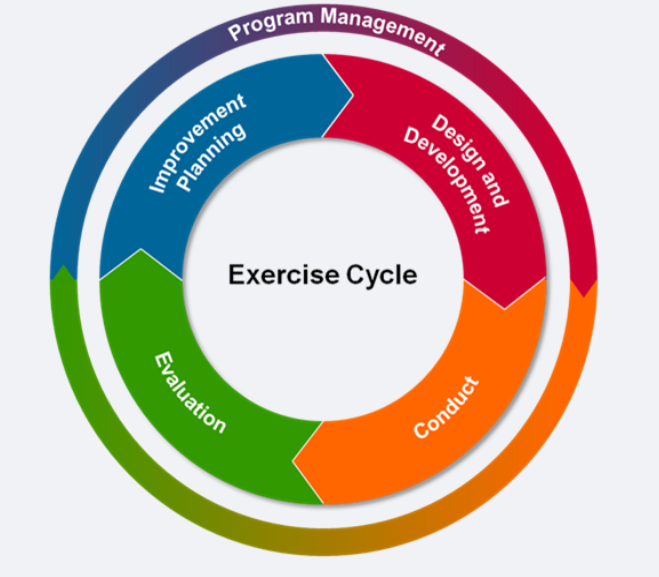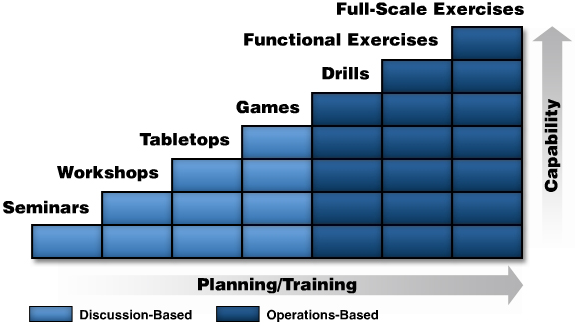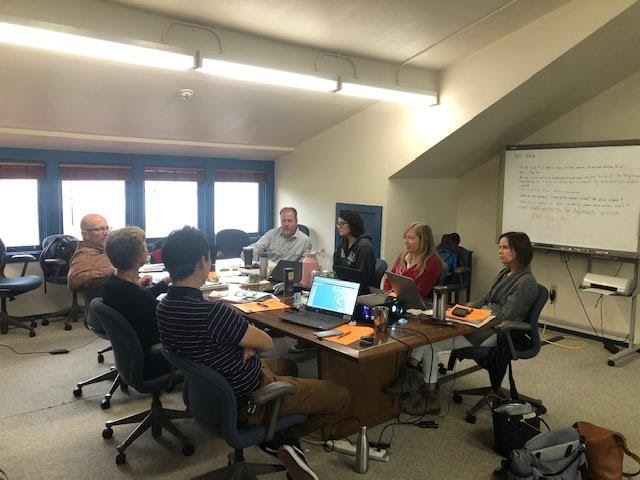A core pillar of the Disaster Preparedness Program (DPP) is designing and implementing exercises. Exercises play a vital role in preparedness by enabling NOAA and the National Ocean Service (NOS) to test and validate plans and capabilities, and identify and address gaps and areas for improvement. The DPP leads exercise programs to improve NOS’s preparedness posture and emphasize the value of the exercise cycle. Exercises provide a low risk environment for NOS to test capabilities and familiarize our personnel with roles and responsibilities they may have during an emergency or disaster.

The Homeland Security Exercise and Evaluation Program (HSEEP) is the standard resource and guidance used by most federal, state, local, tribal, and nonprofit agencies to develop exercises in a coordinated and consistent manner. Building on the foundations of project management, HSEEP sets forth a suite of exercise planning documents, templates, and guidance designed to establish a common exercise language and meet the goals of the National Planning Frameworks and the National Incident Management System (NIMS).
Types of Exercises
Within HSEEP, there are two main categories of exercises: discussion-based and operation-based. Discussion-based exercises include:
- Seminar: an informal discussion-based exercise led by a presenter or facilitator, used to teach or orient participants.
- Workshop: a formal discussion-based exercise led by a presenter or facilitator, used to build or achieve a product.
- Tabletop Exercise (TTX): involves personnel in an informal group discussion centered on a hypothetical scenario.
- Game: a simulation of operations that often involves two or more teams, usually in a competitive environment, using rules, data, and procedures designed to depict an actual or hypothetical situation.
However, operation-based exercises include different types of exercises and can be more involved:
- Drill: a supervised activity that tests a specific operation or function of a single agency.
- Functional Exercise (FE): a single or multi-agency activity designated to evaluate capabilities and multiple functions using simulated response.
- Full-scale exercise (FSE): high-stress, multi-agency, multi-jurisdictional activity involving actual deployment of resources in a coordinated response, as if a real incident occurred.

The type of exercise designed is dependent on what functions need to be tested and what level of player interaction is needed to meet that goal. The DPP believes that choosing the correct type for the purpose and goal of your exercise is vital to its success. It will also help to determine the roles that are needed to be filled to effectively execute your exercise.
Exercise Roles
Regardless of the type of exercise you develop, there will always be roles that must be filled to ensure your exercise is a success. These include:
- Players: personnel who have an active role in discussion or performing their regular roles and responsibilities during the exercise. Players discuss or initiate actions in response to the simulated emergency.
- Controllers: responsible for planning and managing exercise play, set up and operate the exercise site, and act in the roles of organizations or individuals who are not playing in the exercise. Controllers direct the pace of the exercise, provide key data to players, and may prompt or initiate certain player actions to ensure exercise continuity. They also monitor the exercise timeline and supervise the safety of all participants.
- Simulators: control staff personnel who role play nonparticipating organizations or individuals. They often operate out of the Simulation Cell (SimCell), but occasionally can be face-to-face with players.
- Evaluators: responsible for evaluating and providing feedback on a designated functional area of the exercise. Evaluators observe and document performance against established capability targets and critical tasks.
- Observers: on-scene at an exercise to watch the progression and decisions being made. This person does not directly participate in the exercise, but sometimes is able to support the development of player responses during the exercise by asking relevant questions or providing subject matter expertise.
- Facilitators: these people provide situation updates and moderates discussions. They also provide additional information or resolve questions, as required.
Each key role in an exercise is critical and should be filled with someone who is knowledgeable about the associated responsibilities and expectations.

Make it your Own
Although the HSEEP doctrine is widely used, it allows for a lot of flexibility to accommodate an agency’s individual needs. Within NOAA and NOS, many times the roles of controllers and evaluators are combined, as we are a small agency. The person filling that blended role accomplishes the same tasks, but they’re doing double-duty. Sometimes exercises don’t call for or have any observers—which is completely allowed. Understanding your agency, its needs, and the flexibilities HSEEP provides will ensure a successful exercise.
The DPP develops and executes various exercises throughout each year and believes that the continual cycle of planning, training, and exercising helps keep our responders in a constant state of readiness. To learn more about exercises visit our website.
